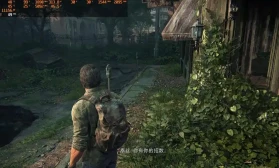2048 Extreme - Grids: Size Strategies Effectiveness - A Review
Introduction
2048 Extreme is a popular puzzle game that challenges players to merge numbered tiles on a grid to reach the elusive 2048 tile. Unlike the classic version, 2048 Extreme introduces varying grid sizes, adding complexity and requiring different strategic approaches. This review explores the effectiveness of different grid sizes (e.g., 3×3, 4×4, 5×5, and beyond) and analyzes optimal strategies for maximizing scores.
Understanding Grid Sizes in 2048 Extreme
The game's core mechanics remain consistent across grid sizes, but the difficulty and required strategies shift significantly.

1. Small Grids (3×3 and 4×4)
-
3×3 Grid: Extremely restrictive, with limited space for tile movement.
- Pros: Easier to control tile placement, fewer random spawns.
- Cons: High risk of gridlock; reaching high-value tiles is challenging.
- Strategy: Prioritize corner play and forced merges to avoid deadlocks.
-
4×4 Grid (Classic Mode): Balanced difficulty, ideal for beginners.
- Pros: Enough space for strategic planning; predictable spawn patterns.
- Cons: Still prone to overcrowding if mismanaged.
- Strategy: Use the "corner strategy" (keeping the highest tile in a corner) and chain merges efficiently.
2. Medium Grids (5×5 and 6×6)
-
5×5 Grid: Offers more flexibility but introduces complexity.
- Pros: Reduced risk of immediate gridlock; more merging opportunities.
- Cons: Requires advanced planning to prevent scattered tiles.
- Strategy: Maintain multiple merging lanes and avoid spreading high-value tiles.
-
6×6 Grid: A test of endurance and foresight.
- Pros: Higher potential for large combos and scores.
- Cons: More unpredictable spawns; harder to track all tiles.
- Strategy: Divide the grid into smaller zones and manage merges systematically.
3. Large Grids (7×7 and Beyond)
-
7×7 Grid: Demands expert-level control.
- Pros: Allows for massive chain reactions and high scores.
- Cons: Extremely difficult to maintain order; high probability of failure.
- Strategy: Use a "snake pattern" to consolidate tiles toward a single edge.
-
8×8 and Larger: Mostly experimental, rarely seen in competitive play.
- Pros: Theoretical potential for ultra-high scores.
- Cons: Nearly impossible to control without AI assistance.
Comparative Analysis of Strategies
| Grid Size | Difficulty | Optimal Strategy | Success Rate |
|---|---|---|---|
| 3×3 | Very Hard | Corner Lock | Low |
| 4×4 | Moderate | Corner + Chain Merges | High |
| 5×5 | Challenging | Multi-Lane Merging | Medium |
| 6×6 | Hard | Zone Management | Medium-Low |
| 7×7+ | Extreme | Snake Pattern | Very Low |
Conclusion
Smaller grids (3×3 and 4×4) favor precision and quick reflexes, while larger grids (5×5+) demand long-term planning and adaptability. The 4×4 grid remains the most balanced, offering a mix of challenge and strategic depth. Players should experiment with different grid sizes to refine their skills and discover which size best suits their playstyle.
Final Thoughts
2048 Extreme’s varying grid sizes provide unique challenges, making it a dynamic puzzle experience. Mastering each grid requires distinct strategies, and players must adapt their approach based on available space and tile spawn randomness. Whether aiming for high scores or pure efficiency, understanding grid dynamics is key to success.
Tags: #2048Extreme #PuzzleGames #StrategyGuide #GridSizeAnalysis #GamingTips











